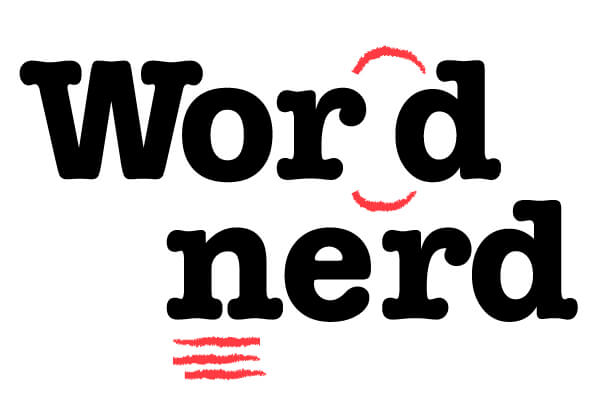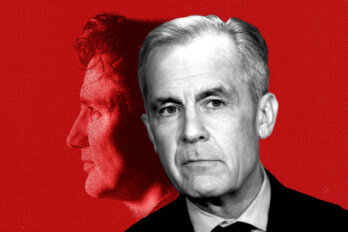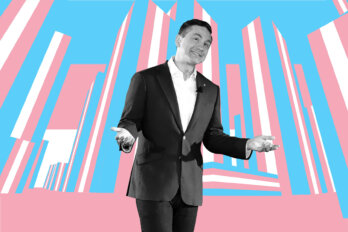I’m not usually amused or appalled by typos. When I come across something along the lines of “An event for the offspring of mixed-race families shits a chord” (Toronto Star, January 3), I don’t wince or chortle smugly or become avidly judgmental or assume that the piece was never vetted by a copy editor. Mostly, when I see a “selling public asses” or “selling pubic assets,” I just feel an overwhelming sense of dread—because there but for the grace of sufficient time, and sleep, and proofreading support go I.
I am generally sound. I catch many things. I am familiar with a large number of grammatical rules and errors. Yet just last week, I managed to read a paragraph with “garbage dumb” in it and not recognize that there was something amiss. There were extenuating circumstances, of course: I was scanning the text very quickly; I was focusing on the words around that one, because I had questions about other parts of the sentence; I had read roughly 85,000 other words that same day. Luckily for me, a co-worker spotted it, and I was saved: no Walrus reader would have occasion to say, “What kind of people are they hiring over there? Garbage dumb people, apparently.”
As much as I remind myself that certain circumstances can be considered extenuating, though, I would prefer never to make or miss errors of any kind—and I’ve worried that the very fact that certain mistakes have escaped me means that I lack true copy-editing smarts. How many mistakes is it normal to miss? How many blunders can one fail to spot before one should seriously start considering searching for a job that does not require spotting blunders?
I had assumed these were rhetorical questions, ones related to obscure and complex issues of human fallibility and self-image. But when I typed “copy-editing error rates” into Google, the internet provided me with a surprisingly solid and reassuring answer: 5 percent. Professional editors can expect to miss approximately 5 percent of the errors in any given piece. Ray Panko, a professor at the University of Hawaii, offers a more detailed breakdown of proofreading-related data on his gloriously named “Human Error Website” and arrives at a similar conclusion: even professional proofreaders aren’t perfect. “Nonword errors” (teh instead of the) are easier to catch (proofreaders tend to spot 90 percent of them), but “word errors” (principle instead of principal) are trickier: 15 percent of them go unnoticed.
Even the most experienced, fastidious, and obsessive copy editors, then, will miss things once in a while. If clean, coherent, correct copy is the goal, the answer is not only to have informed and conscientious editors, copy editors, and proofreaders—but to have as many of them as possible. When I asked John McIntyre, night-content production manager at the Baltimore Sun and past president of the American Copy Editors Society, whether he’d be willing to comment on typos and what publications can do to avoid them, he gamely agreed: “The traditional structure of the desk,” he wrote, “guaranteed multiple eyes on every text: The writer’s text was read by an assigning editor and sent to the copy desk, where it was edited by a copy editor, checked by the copy chief, and checked again by another copy editor reading page proof. And in the old days, even then a printer would beckon the makeup editor over and say in the collegial manner for which the printers were famous, ‘Do you see what you assholes have done this time?’”
Someone out there missed “shits a chord,” and that person undoubtedly feels like crap. But the fact that they overlooked a typo doesn’t mean they’re a terrible reader or editor—indeed, McIntyre explains, “Experienced copy editors miss typographical errors because they are experienced readers. Experienced readers do not read one letter at a time. They are familiar with words, the look of words, and common syntactical constructions. They recognize patterns. And the brain interprets familiar patterns in visual data, automatically correcting.”
What a typo often means is simply that there weren’t enough eyes on a text. When not enough people have not enough time to thoroughly edit too much material, mistakes will be made.
Publications should realize they have a vested interest in hiring a sufficient number of professional readers and then giving them the time necessary to read carefully and well: One glaring error is an embarrassment that can be recovered from. Frequent and predictable errors, though (however unimportant or petty they may seem), will ultimately erode the credibility of any organization. Although I would argue that we should not judge too harshly whoever missed the chord shitting (how many versions of the headline were there? how many people looked at the text? how long did they have to do so?), I have no such reservations when it comes to those responsible for unrelenting assaults on accuracy.
Take, for example, the Trump administration.
The White House recently released a list of “underreported” terror attacks; in it, the word “attacker” is misspelled twenty-seven times (“attaker”); “Denmark” appears as “Denmakr,” and “San Bernardino” as “San Bernadino.” As one headline noted, “Donald Trump’s ‘Unreported Terror Attack’ List Contains More Typos than Actual Unreported Terror Attacks.” Toronto Star reporter Daniel Dale, as well as keeping an exhaustive running list of Trump lies, has been pointing out the mistakes that have made it into White House press releases: Australia has a president; the US apparently has two defence secretaries; Theresa May, the prime minister of the United Kingdom, has no “h” in her name. Just the other day, Sean Spicer, the White House press secretary, while reading from prepared notes, referred to the productive meeting Trump had just had with “Prime Minister Joe Trudeau of Canada.”
Then there was Donald Trump’s “inauguration print,” which was—until recently—available for purchase through the Library of Congress. It was graced by the following inspirational words: “No dream is too big, no challenge is to great. Nothing we want for the future is beyond our reach.” Then there was the tweet from the US Department of Education—the one that misspelled the name of W. E. B. Du Bois, the co-founder of the NAACP. And the follow-up apology tweet, which read, “Our deepest apologizes for the earlier typo.”
It’s possible that one decent and hard-working copy editor, operating without proper procedural backup, might miss “San Bernadino.” I defy any decent and hard-working copy editor to miss twenty-seven instances of “attaker.” I realize that the most serious charge levelled against the Trump administration will not be that it fails to employ competent copy editors. I realize that the misspelling of “attacker” is considerably less important than the larger context in which that word is being used. I realize that the fact that the White House evidently cares little about facts and rules and attention to detail has already been—and is still being—established in far more important ways. Nevertheless, whenever I see Trump-related typos (which is frequently), I feel both appalled and profoundly worried: each misspelling, each linguistic misstep, is a clear sign that very important people don’t know what they’re doing and couldn’t care less.




